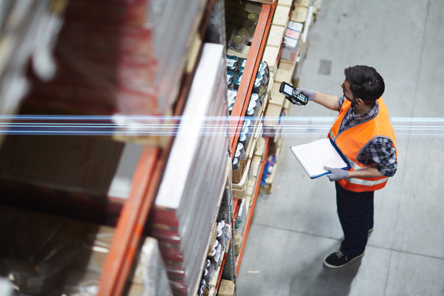The end goal of any ecommerce business is to get products into the hands of your customers. So, how do companies do it?
Depending on the organization, the two most common methods of order fulfillment are either handled in-house or outsourced through a third-party logistics (3PL) partner. 3PL partners are experts with the right tools, technologies and infrastructure to handle the entire fulfillment process – receiving inventory, storage and control, picking, packing, shipping, delivery and returns.
Both in-house and 3PLs have various advantages and challenges, so it’s important your company chooses what’s best for you based on your needs not only now, but also in the future.
How to Know Which is Right for You:
IN-HOUSE PROS & CONS
|
Pros:
|
Cons:
|
OUTSOURCING TO A 3PL PROS & CONS
|
Pros:
|
Cons:
|
WHAT IS NEEDED FOR INTERNAL FULFILLMENT?
If you plan to keep your order fulfillment in-house, here are just a few actors to consider:
- Warehouse space: The warehouse space you choose should not only meet your current needs, but also have room for growth in terms of square footage, shelving units, warehouse racks, loading docks, etc. Beyond selecting the right space based on anticipated usage and growth, understand your warehouse space is also an investment. Be sure you’re ready to handle all associated costs, such as hiring, equipment and insurance prior to committing.
- Well-trained staff: Hiring the right staff - both management and hourly roles - is imperative for success. Companies should offer robust training for employees, as well as providing employees with competitive salaries, benefits and room for growth.
- Warehouse management software: Nowadays speed is expected in the supply chain game. Accuracy and agility within your supply chain, in many ways, have surpassed speed as the top priorities. It’s crucial for companies to maintain a high order accuracy rate to avoid negative reviews, reduce the number of returns and establish positive brand loyalty. By investing in the right fulfillment software, you’ll be able to automate day-to-day, time-consuming tasks like tracking products, advising on inventory replenishment, and reporting and analytics.
BENEFITS OF THIRD-PARTY LOGISTICS
For those ready to outsource fulfillment, there are many benefits to partnering with a 3PL including:
- Increased capacity: When working with a 3PL, you can scale your warehouse space, labor and inventory with ease and efficiently handle peak seasons or rapid business growth. As your business grows, instead of spending considerable time finding new warehouses or hiring new employees, a 3PL can help manage it all without the stress allowing you to focus on other tasks.
- Expertise: A 3PL provider has knowledge and experience in areas such as international compliance, shipping regulations, necessary documentation, transportation, and more that you may just not know. Engaging with experts can advance and guide the way your logistics operation is handled. In turn, this allows you to focus on other core aspects of your business.
- Access to the latest technology: 3PLs often have specialized technology that most in-house operations don’t have access to due to cost and technical resources. Innovative technology can help with inventory management and control, cybersecurity, shipment tracking and automation to streamline processes and create better warehouse efficiencies.
WHAT TO LOOK FOR IN A 3PL PARTNER?
Now, let’s suppose you made the decision to outsource your fulfillment. How do you go about choosing the right partner? There is a lot to consider when making this decision. We recommend first thinking about these characteristics:
- Excellent customer service: An outside logistics provider is tasked with handling certain aspects of your business on your behalf, so it’s imperative that they represent your business – and your brand – positively to maintain a great reputation amongst your customers.
- Tracking for customers: Customers want to know where their orders are at all times and locating the exact whereabouts of their package shouldn’t be difficult. Most 3PL providers have tracking platforms that allow for visibility throughout every step of the supply chain – enhancing the overall customer experience.
- International warehousing: A trusted 3PL partner allows for the flexibility to expand into new markets without major financial risk. By gaining access to warehouses and distribution centers internationally, organizations can grow and expand their market share to stay competitive.
SEE WHAT SEKO CAN DO FOR YOU
After outlining the pros and cons of both in-house and 3PL order fulfillment, only you can make the best decision based on your business. SEKO has the global network or shared facilities, multi-channel distribution centers and innovative technologies that you need to turn your supply chain into a competitive advantage.
Find out how SEKO can transform your business today by visiting https://www.sekologistics.com/us/.



